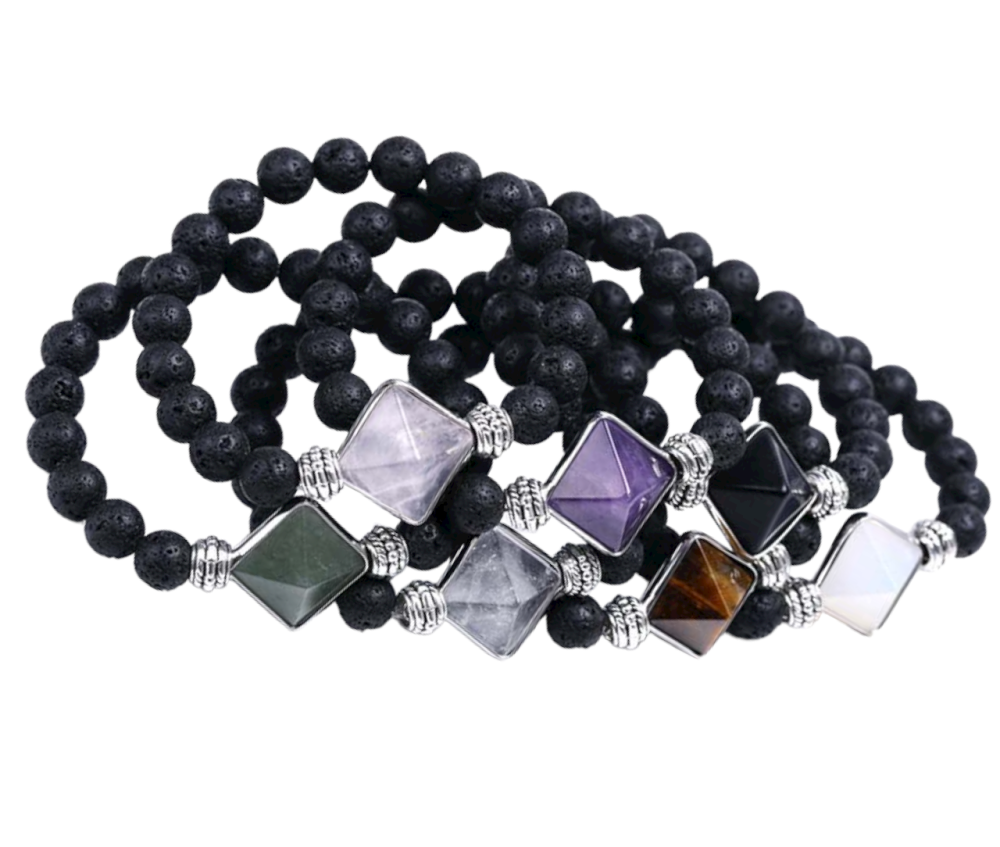We use cookies to make your experience better.
TimmersGems has a new website, existing customers also need to register again.
bullet bracelet with Lava stone 8mm and Gemstone merkaba of 16 mm One size fits all.
Beautiful Lava Stone bracelet with Gemstone Merkaba processed into bracelets that fit everyone, the balls are 8 mm in diameter. Contains Aventurine, Tiger Eye, Amethyst, Rock Crystal, black Onyx, etc. Supplied assorted.
Availability:
In stock
SKU
11798
bullet bracelet with Lava stone 8mm and Gemstone merkaba of 16 mm One size fits all. is available to buy in increments of 3
Lava is rock in liquid form. After magma reaches the earth's surface or the sea floor, it is called lava. Due to differences in magma composition, rate of outflow, temperature and chemical, mineralogical composition, there are several types of lava, each with its own behavior and characterized by a porous structure. Lava can have a destructive effect, but at the same time it also has a creating effect. For example, new land can be formed by lava, for example the Hawaiian islands in the Pacific Ocean. Furthermore, cooled lava -after several centuries of weathering- is very fertile and can therefore be used well as agricultural land. The word 'lava' originates from the Italian language, and is probably derived from the Latin word labes, meaning the sliding or sliding of the lava. The word was first used in its present sense by Francesco Serao, professor of medicine at the University of Naples, when he described the eruption of Vesuvius in the period from May 14 to June 4, 1737. Serao believed that lava was a mixture of sand and earth that had been melted by the heat of the volcanic fire. He described "a flow of fiery lava" in comparison to the water and mud that cascade from the volcano after heavy rains. Cooling viscous lava often accumulates in a volcanic shaft. This blockage and the presence of gases in the lava build up pressure in the shaft. Eventually, an eruption takes place, creating large clouds of volcanic ash and gas, as well as pyroclastic flows. The most explosive eruptions are followed by a quieter period when lava is ejected. When the lava is rich in silica, a slow-growing lava dome forms, a large pillow-like structure full of cracks and fissures. The top and edges of a lava dome are usually covered with rock fragments, breccia and ash. The hardened rock that forms from lava is called effluent. The appearance and composition of different outgrowth rocks varies widely. If a lava flow of rhyolite cools quickly, it can become obsidian. However, if it is filled with gas bubbles, it can also become pumice. As the same lava cools slowly, it becomes a light-colored solid rock that is simply called rhyolite.
| Country of Manufacture | Hong Kong SAR China |
|---|












